To kick off our 21st-Century Architecture: 25 Years 25 Buildings series, we profile Herzog & de Meuron’s Tate Modern in London – the most significant building of the year 2000.
The turn of the millennium prompted the opening of numerous high-profile buildings, but none have had the lasting impact of Tate Modern, set inside an abandoned power station on the banks of the Thames in London.
Opened in May 2000, the gallery was ahead of its time with its focus on reuse, rejuvenating London’s cultural offering and propelling Swiss studio Herzog & de Meuron to global fame.
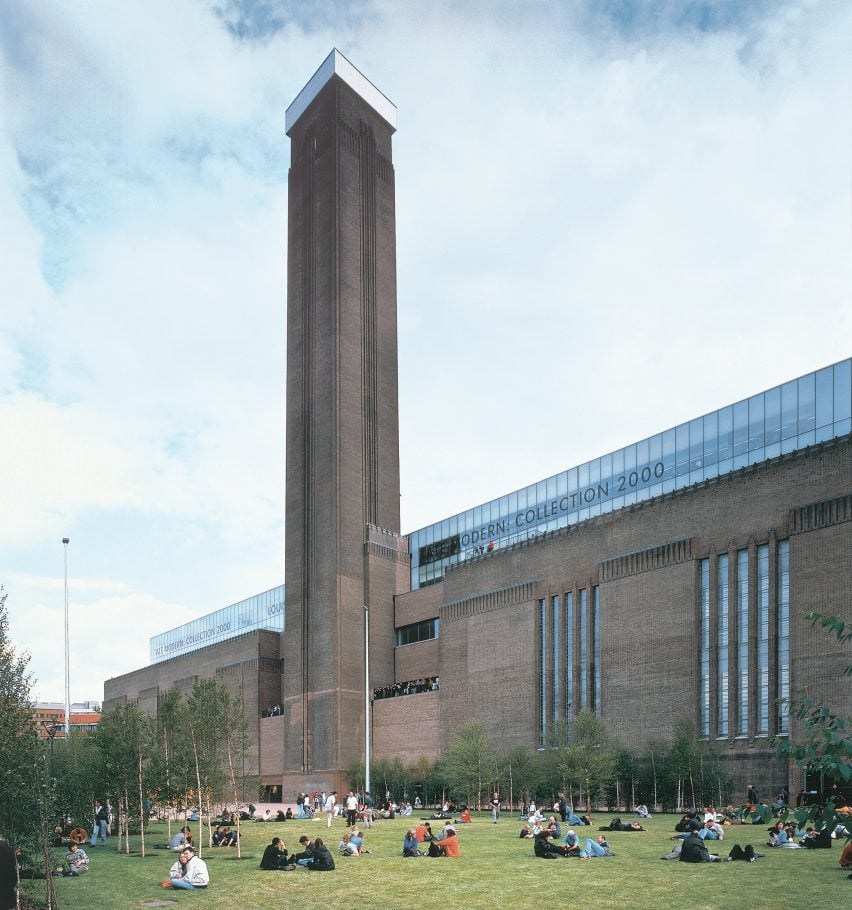
The building fundamentally changed art gallery design. Today, institutions around the world from Sydney to Doha are looking to convert former industrial spaces into unique galleries with the aim of replicating the power of Tate Modern’s Turbine Hall, but this wasn’t always the way.
Back in the early 1990s, London had no public institution dedicated to modern art.
When Tate decided to establish a second London venue due to its original home running out of space, it was broadly expected that a brand new building would be commissioned.
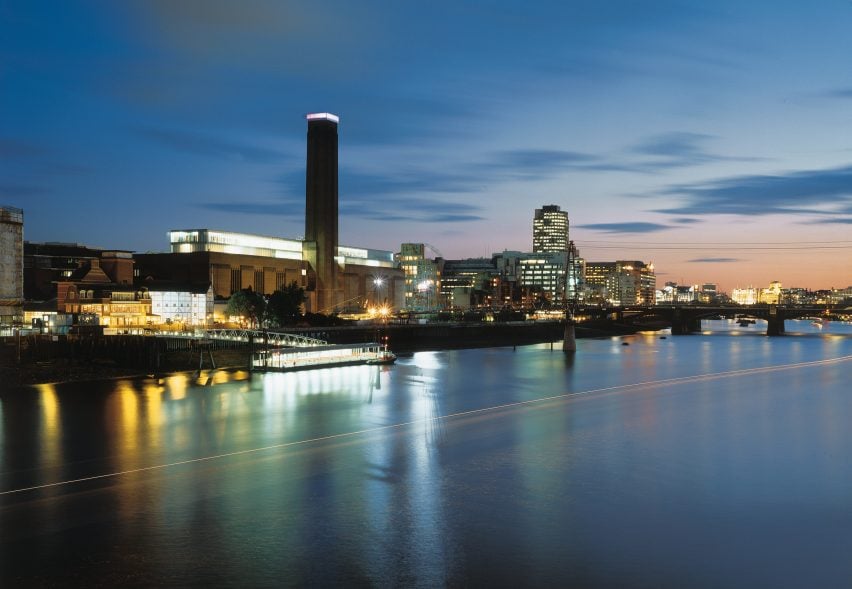
However, in what Herzog & de Meuron co-founder Pierre de Meuron later described as an “utterly surprising and daring choice”, the institution chose an abandoned power station on London’s deeply unfashionable and poorly connected South Bank to be its new home.
By that time Bankside Power Station, designed by Battersea Power Station architect and telephone-box designer Giles Gilbert Scott, had lain empty for over a decade following its closure in 1981.
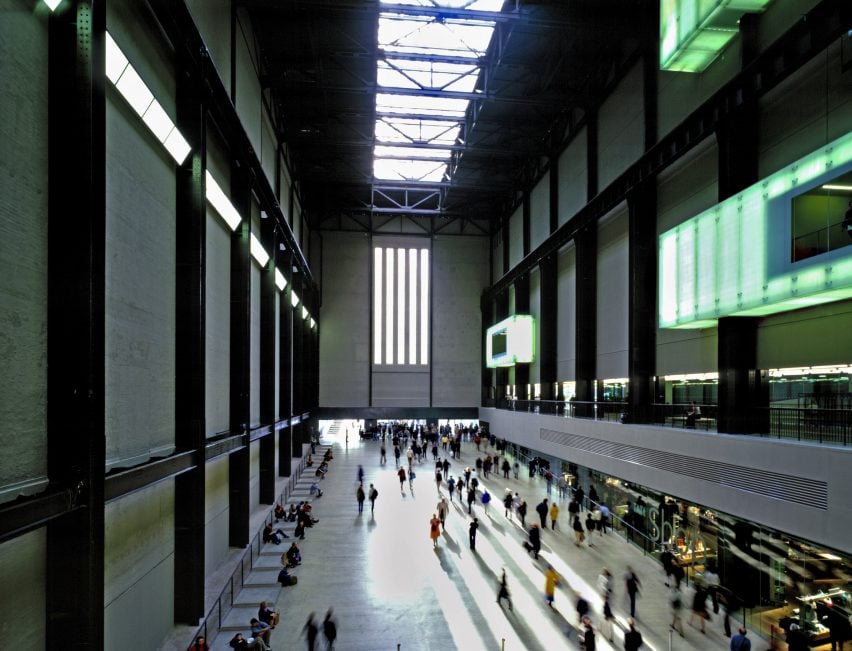
The Tate organisation, led by director Nicholas Serota, saw the potential of the giant building and its central location almost directly opposite St Paul’s Cathedral.
Tate organised a competition that attracted entries from all of the biggest architects of the day, including Rafael Moneo, David Chipperfield, Renzo Piano, Michael and Patty Hopkins, Nicholas Grimshaw, Alsop & Störmer, Future Systems, Tadao Ando and OMA.
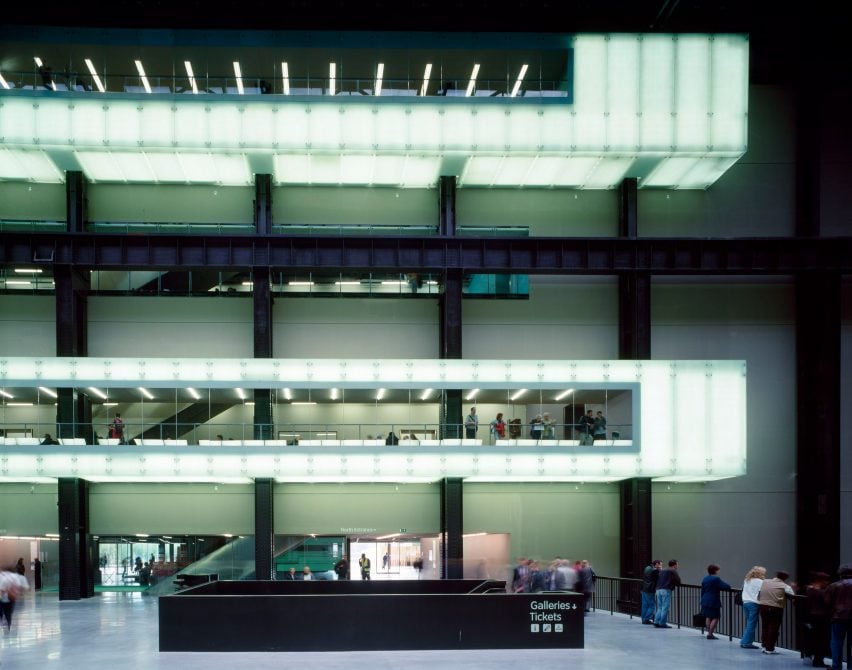
Alongside this star-studded lineup was a little-known studio from Switzerland that had built little beyond a series of railway signal boxes in Basel – Herzog & de Meuron, which – of course – won the commission.
Among the numerous dramatic proposals that made radical additions to the power station, Herzog & de Meuron’s appeared to do very little to the building.
“Our design involved few but powerful interventions, with the aim of retaining the industrial character of the building as much as possible,” said De Meuron.
On the exterior, Herzog & de Meuron’s design left the building looking like a power station, with only a two-storey glazed extension added to the roof of the brick building. If the exterior was radical in its subtlety, so too was the building’s gallery space.
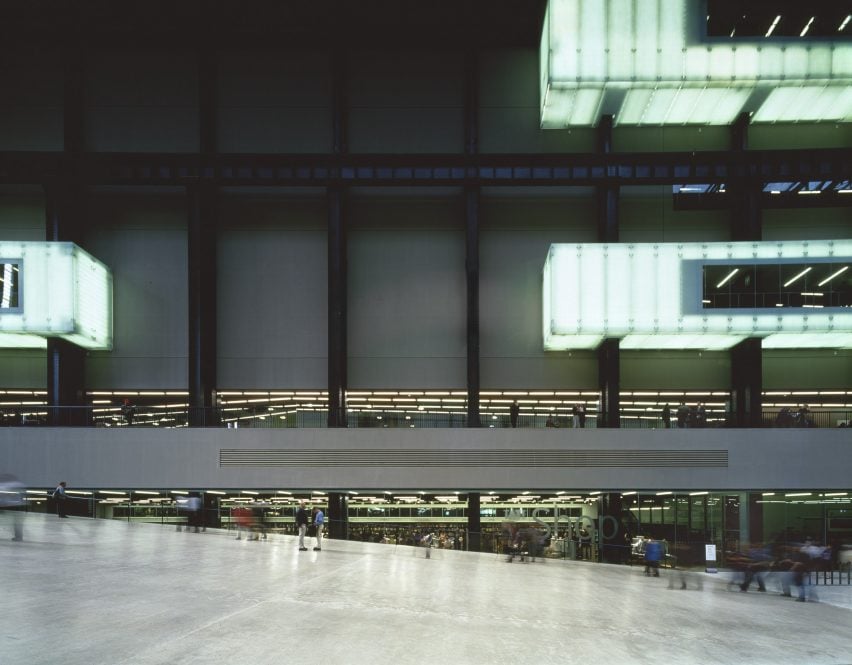
The studio stacked the gallery’s core spaces vertically in the main building. A bookstore, coffee shop and auditorium occupied the lowest two floors, with galleries of various sizes for the Tate’s permanent collection and temporary exhibitions spread across the third, fourth and fifth floors and a bar and restaurant with views across London opened in the glazed extension on top.
However, it is the former turbine hall that is the focal point of the building and has come to define Tate Modern. The giant, cathedral-like space, which stretches the full 150-metre length of the building and rises to its full height, was a dramatic new type of space in which to display art.
It is, I’d argue, the finest new public space in the city. It is free to access, it is generous and there is a sense of the unexpected Edwin Heathcote
The Turbine Hall has since been host to numerous attention-grabbing, site-specific artworks by leading contemporary artists including Olafur Eliasson, Louise Bourgeois, Anish Kapoor, Rachel Whiteread, Ai Weiwei and Carsten Höller.
Described by Financial Times architecture critic Edwin Heathcote as the “finest new public space in the city”, the huge plaza-like gallery changed how people thought about contemporary art and modern art galleries.
A symbol of renewal in south London; the Tate Modern, bright star on the Thames’s other side Alan Riding – New York Times
Visiting the Tate Modern today, it is hard to imagine the scepticism faced by Tate for the choice of site, architect and design. Like much of the best architecture, it is hard to imagine the building as anything else.
On its opening, the gallery was well received, with the New York Times calling it a “bright star on the Thames’s other side”.
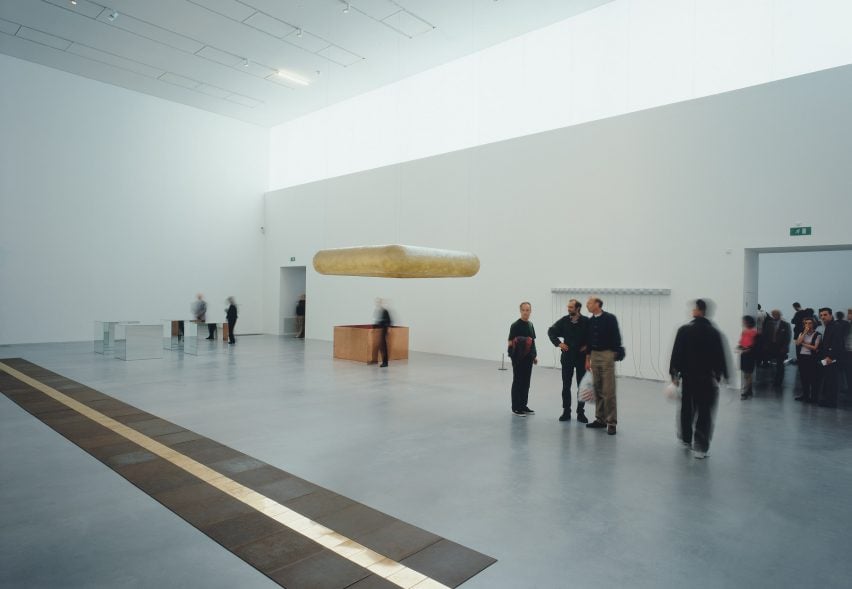
The gallery was opened by the Queen in May 2000 and quickly surpassed its expected annual visitor figures of two million, with more than five million visitors in the first year. Now, almost a quarter of a century after it opened, the Tate Modern is still the world’s most visited contemporary art museum – a testament to both Tate’s and Herzog & de Meuron’s vision.
The New York Times’s review went on to claim that Tate’s original gallery, renamed Tate Britain, “does not want to be upstaged by its younger sibling”.
Looking back now, it is clear that it has been.
Did we get it right? Was Herzog & de Meuron’s Tate Modern the most significant building completed in 2000? Let us know in the comments. We will be running a poll once all 25 buildings are revealed to determine the most significant building of the 21st century so far.
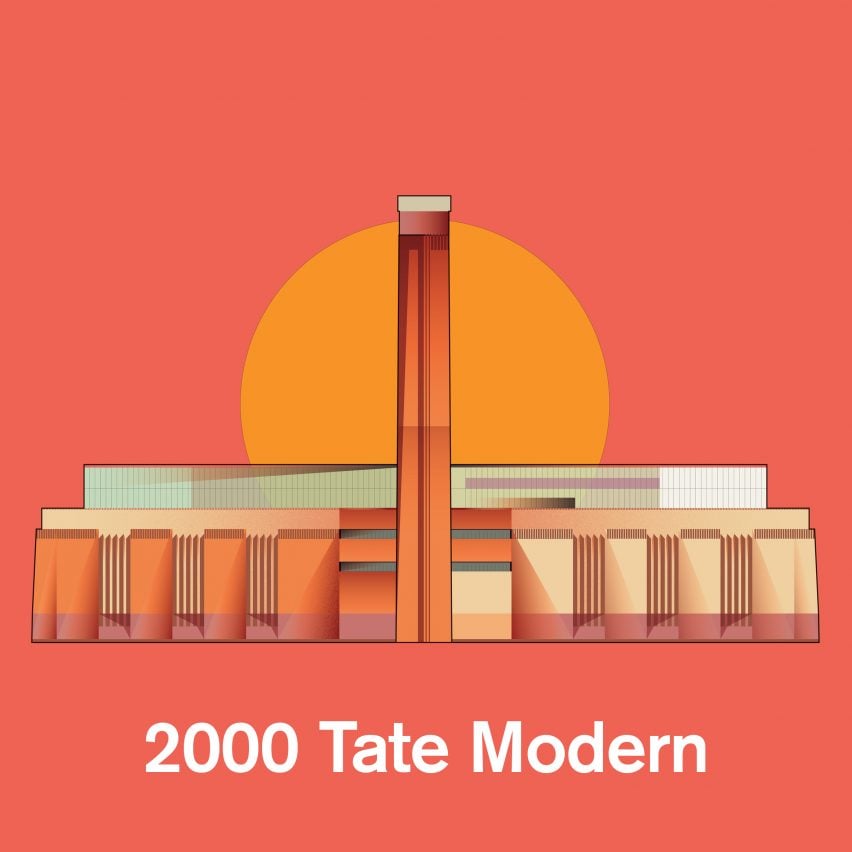
This article is part of Dezeen’s 21st-Century Architecture: 25 Years 25 Buildings series, which looks at the most significant architecture of the 21st century so far. For the series, we have selected the most influential buildings from each of the first 25 years of the century.
The illustration is by Jack Bedford and the photography is by Margherita Spiluttini.
21st-Century Architecture: 25 Years 25 Buildings
2000: Tate Modern by Herzog & de Meuron
2001: Gando Primary School by Diébédo Francis Kéré
2002: Bergisel Ski Jump by Zaha Hadid
This list will be updated as the series progresses.

